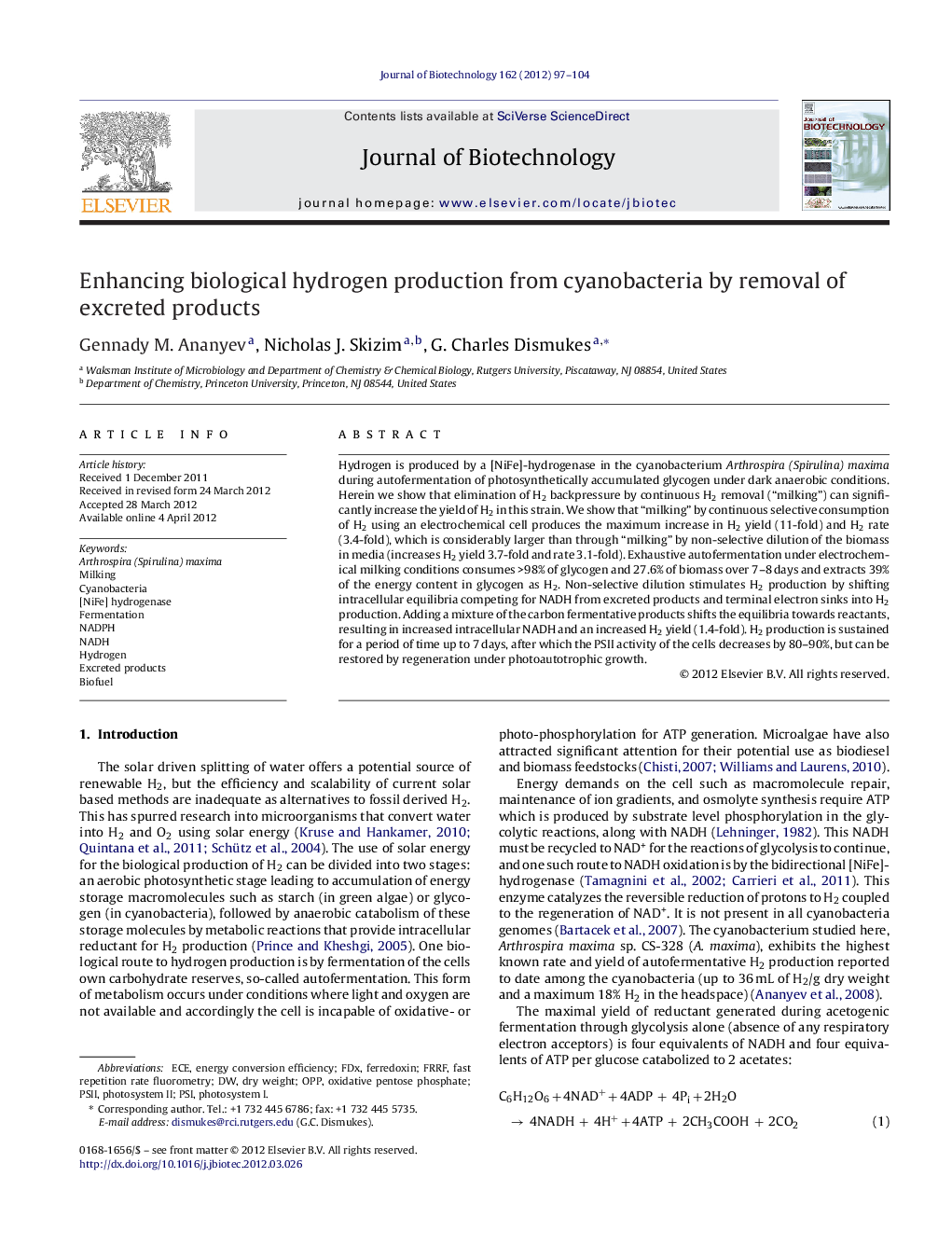| Article ID | Journal | Published Year | Pages | File Type |
|---|---|---|---|---|
| 23656 | Journal of Biotechnology | 2012 | 8 Pages |
Hydrogen is produced by a [NiFe]-hydrogenase in the cyanobacterium Arthrospira (Spirulina) maxima during autofermentation of photosynthetically accumulated glycogen under dark anaerobic conditions. Herein we show that elimination of H2 backpressure by continuous H2 removal (“milking”) can significantly increase the yield of H2 in this strain. We show that “milking” by continuous selective consumption of H2 using an electrochemical cell produces the maximum increase in H2 yield (11-fold) and H2 rate (3.4-fold), which is considerably larger than through “milking” by non-selective dilution of the biomass in media (increases H2 yield 3.7-fold and rate 3.1-fold). Exhaustive autofermentation under electrochemical milking conditions consumes >98% of glycogen and 27.6% of biomass over 7–8 days and extracts 39% of the energy content in glycogen as H2. Non-selective dilution stimulates H2 production by shifting intracellular equilibria competing for NADH from excreted products and terminal electron sinks into H2 production. Adding a mixture of the carbon fermentative products shifts the equilibria towards reactants, resulting in increased intracellular NADH and an increased H2 yield (1.4-fold). H2 production is sustained for a period of time up to 7 days, after which the PSII activity of the cells decreases by 80–90%, but can be restored by regeneration under photoautotrophic growth.
Graphical abstractFigure optionsDownload full-size imageDownload as PowerPoint slideHighlights► We present methods for “milking” cyanobacteria to increase H2 production. ► “Milking” is based on eliminating H2 backpressure to accelerate the reaction rate. ► Complete continuous removal of dissolved H2 from the media increases H2 yield 11-fold. ► Photosynthetic activity after exhaustive autofermentation can be fully restored. ► Arthrospira maxima exhibits significant biotechnological potential for H2 production.
